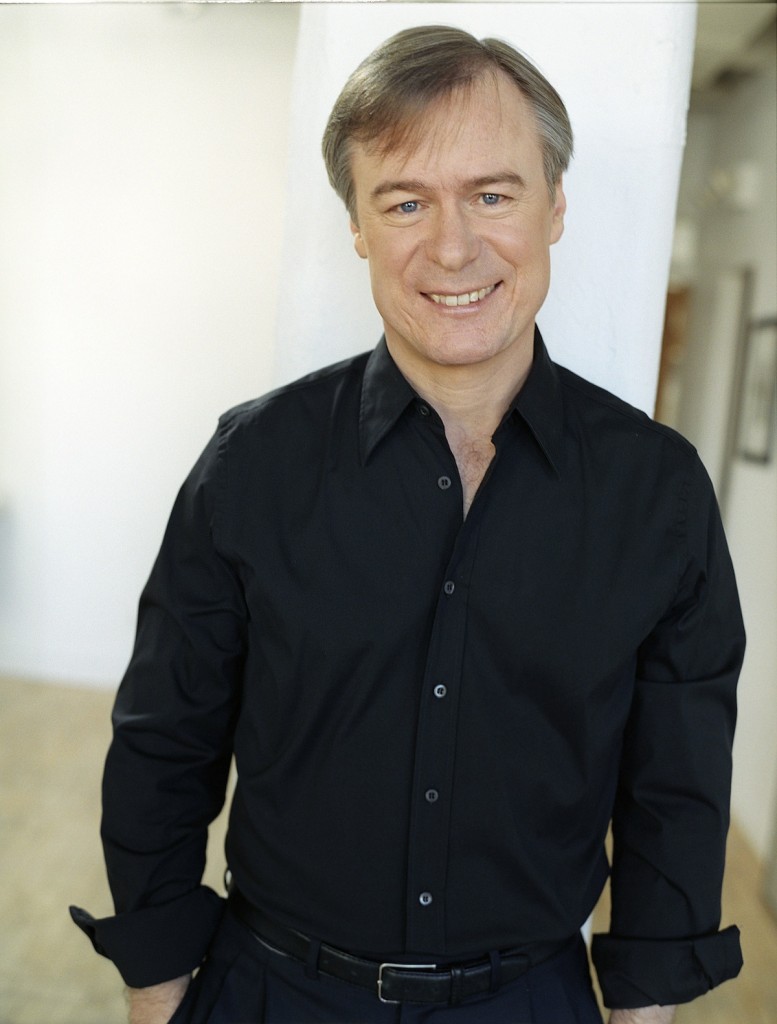Art music from the streets, powerfully served by Robertson, Ensemble ACJW
In modern and contemporary classical music, vernacular sounds are usually associated with popular and quasi-popular styles like rock, hip-hop and jazz. But there’s vernacular, and there’s vernacular: the music of the streets, dirt-roads and byways, the kind of stuff pop fans call roots music and musicologists call folk music.
Vernacular music is as old as humanity and as young as the smallest child who starts singing, and it has always been a part of classical music. The two have had a constant dialogue since the rise of notation, and certainly far earlier than that.
It was vernacular music that linked together the robust program from David Robertson and Ensemble ACJW (a training and teaching fellow collective for young professional musicians), with soprano Dawn Upshaw, heard Saturday night at Zankel Hall.
The music was all from the twentieth century. The oldest work was Bartók’s Music for Strings, Percussion and Celesta, which debuted in 1936, the youngest Steve Reich’s City Life, from 1995. In between chronologically, and opening the concert, was Luciano Berio’s Folk Songs, with Upshaw as soloist. Each piece has roots in the vernacular, consciously or implicitly, and despite varying degrees of abstraction, that makes for direct expressive power for all.
In his work from 1964, Berio collected and recomposed songs from around the globe, mostly traditional, though the first two – “Black is the color” and “I wonder as I wander” – are contemporary singer-songwriter material, the kind that’s transformed into folk music via the universal solvent of time. The songs remain the same, but Berio disassembled the accompaniment and rewrote it as a lean framework that outlines harmonies and rhythms. With common melodies and abstract music, the vernacular becomes art song. Berio connects each through the accompaniment, so the songs speak to each other.
Robertson had a long, engrossing sense of musical line that connected the melody from the first song (“Black is the color”) to the chorus of the third (“Loosin yelav”) into one arching phrase. The haunting, broken viola solo that opens the entire work returns in the cello near the end in “Malurous qu’o uno fenno,” and in concert this cemented the through-composed feeling.
Upshaw has lost some strength and purity in her voice but she knows this music intimately. She’s also one of the few classical singers who can move easily between high and low vocal styles, and she sang with a self-effacing simplicity and ability to color her sound so that the expression was earthy and heartfelt. This was wonderful music-making in every way.
Reich’s sense of the vernacular comes straight from the streets: City Life integrates samples of street hustlers and preachers, cops, taxi horns and brakes. Those are commonly folded into the background, but Robertson gave them prominence. He is a great structural thinker, discerning the weights and proportions that create the power in a composition, and his view of City Life stood out from what is now a fairly crowded field of performances and recordings.
Roberson’s emphasis was consistently on the power of the sound. The tempo for the opening “Check it Out” section was relaxed, the rhythms swinging, and that laid the field for a symphonic shape to the playing. The key music in each section was the sample, interludes of “Pile Driver/Alarms” and “Heartbeat” had a weighty foreboding, and the third movement was dominated by the “It’s Been a Honeymoon” sample, which became central to the overall motion of tension and resolution. This is a work that has been sounding increasingly transitional in Reich’s career, but Robertson and musicians made it feel powerful and essential.
Music for Strings, Percussion and Celesta is one of Bartók’s greatest compositions, a distillation of all the things that make him unique. It is rigorously structured, full of canons, fugues, and precisely formed rhythms. The technical means are wrapped in vivid expressive gestures: the haunting opening string theme, dazzlingly complex rhythms in the “Allegro” movement, a sense of wildness in the “Allegro molto” finale.
Most of all, there is Bartók’s special sound, that of a man who belongs the the nineteenth century but finds himself trapped in the nightmarish twentieth. His music adapts the mechanical power of machinery but yearns to hack itself free. And there is his acerbic flavor that comes out of the folk singing he collected from central Europe. The fruit is a unique musical expression, like that of a man who uses self-deprecating humor to hide his own excoriating view of himself.
This was a gripping, exciting performance, even though it was also the piece in the concert in which the ensemble was less than stellar. The large-scale string section – fifteen to a side, evenly divided – lacks just the last bit of polish and experience, and there were times when the intonation was a bit scrappy and brittle. These are minor criticisms when the playing was so committed and forceful, and the balances so clear. Robertson is such a master of line and shape that he reminds the listener of the importance and greatness of everything in the standard repertoire, and why it is central to the continuing classical tradition.
Ensemble ACJW appears again at Zankel Hall with conductor Susanna Mälkki, 8 p.m. May 10, 2014. carnegiehall.org
